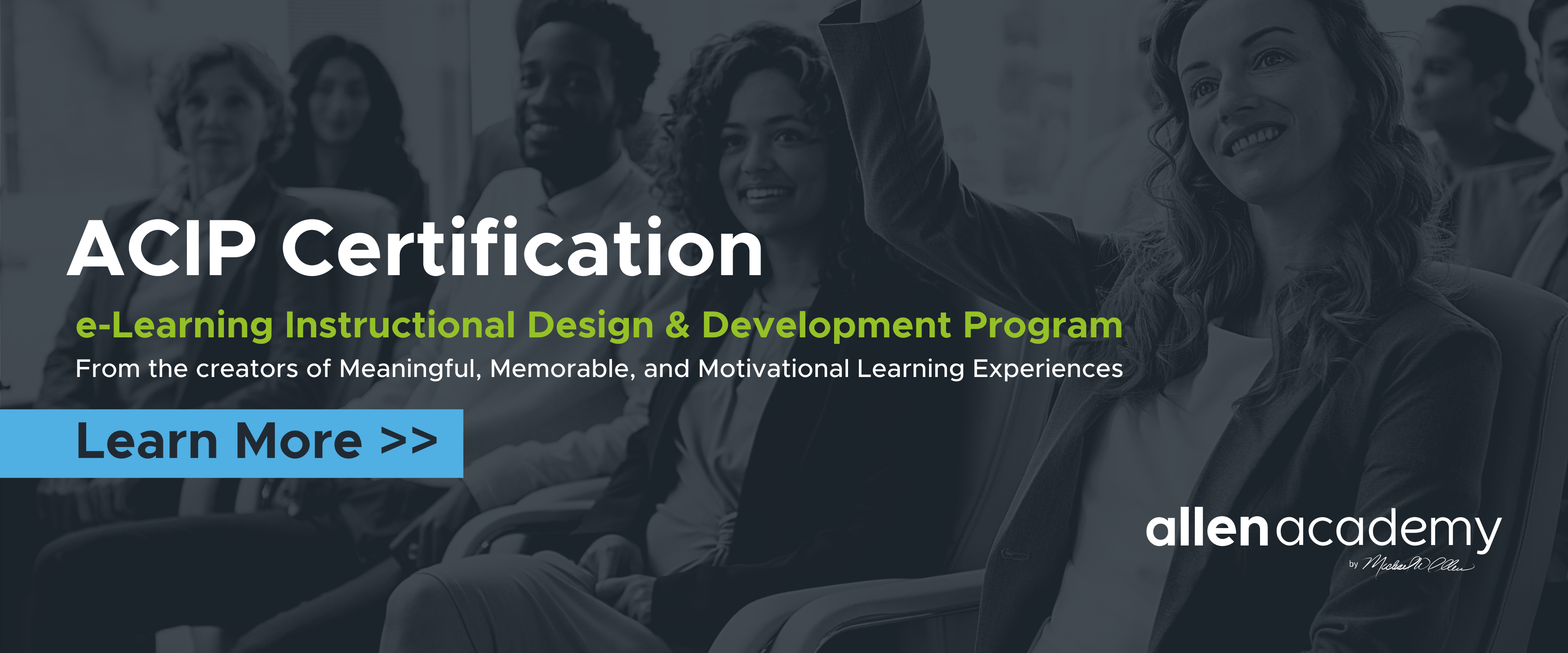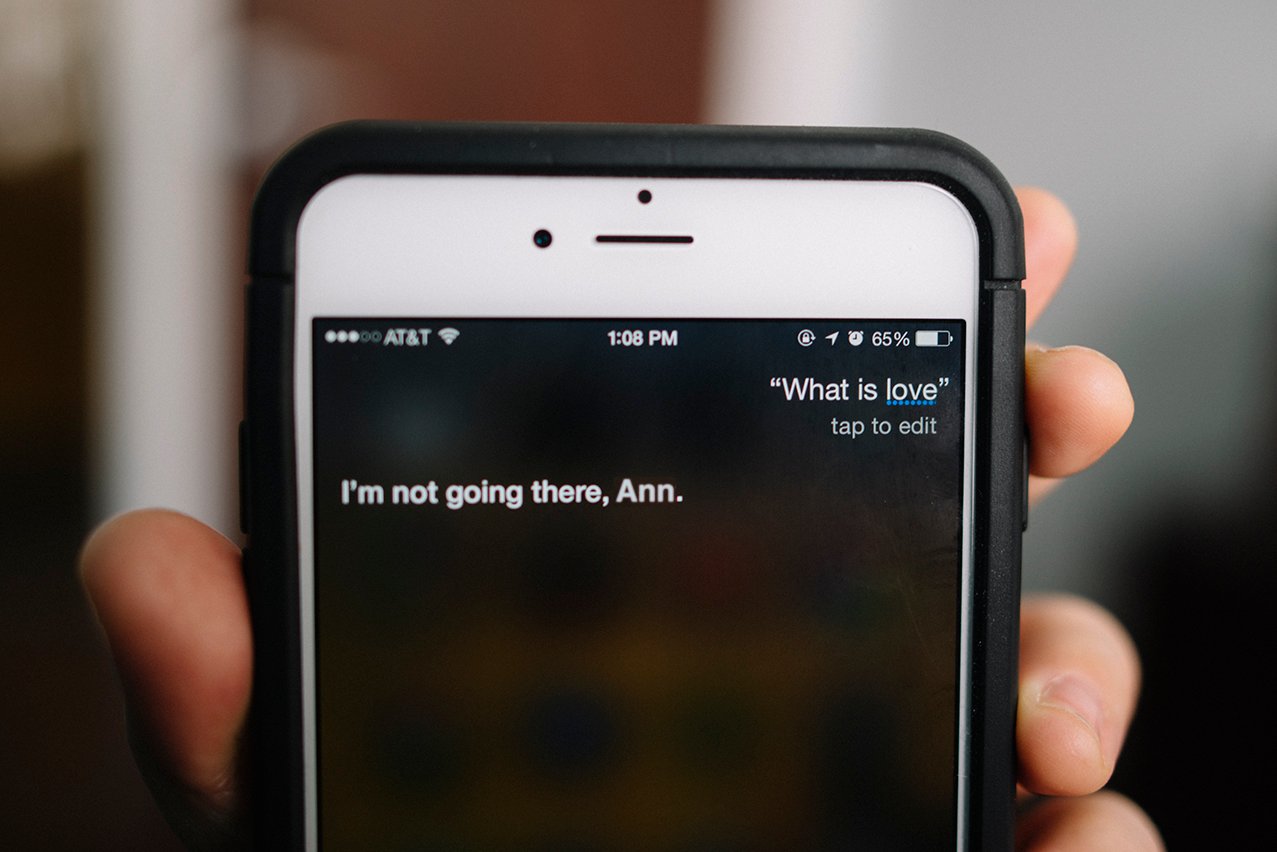Anyone who knows me, knows I’m a brat when it comes to grammar. Please do not use a split infinitive in my presence, always put your end punctuation inside your quotes, and don’t even think about using a plural pronoun (they) with a singular antecedent (everyone). (I know the construction “he or she” following “everyone…” is clunky, but it’s correct, so deal with it.) Given that, why would I, of all people, use a noun—and an abbreviation at that—as a verb? The best rationale of all: to make a point.
CCAF—Context, Challenge, Activity, Feedback—is an instructional designer’s best friend. If you can come up with the Context, Challenge, Activity, and Feedback for any topic for your audience, you can design learning experiences that are right for them. And, not just learning experiences, but learning experiences that are Meaningful, Memorable, Motivational, and Measurable.
Here’s how it works:
-
Define your audience. You should have a sense of their experience level, their length of tenure, and their current abilities with the skills you want to teach.
-
Name the specific performance you want to see from the specific people you are teaching. Make sure to use active verbs that describe observable behaviors when you do that. What are “observable behaviors?” Well, I can tell you that “understand” is not observable. To pinpoint observable behaviors, ask yourself questions like these:
- How would I know if someone were doing it right?
- If I were watching two people at work, what would distinguish the behavior of the one who is performing correctly from the behavior of the one who is performing incorrectly?
- What are the outcomes of the correct behaviors?
Then CCAF
Now you’re ready to define the Context in your e-learning design. I, and other contributors to our E-Learning Leadership Blog, have advised imagining that “the camera is on the learner’s shoulder” when you’re defining Context. In other words, ask: What would the learner see, feel, and experience while he or she performed the correct behaviors?
Once you can imagine yourself in the learner’s reality, having the same experiences the learner would have, you are ready to move on to Challenge. Here, the questions likely are:
-
What is the learner actually doing when performing correctly?
-
What mistakes do people new to this behavior commonly make?
-
What are the consequences to the individual if he or she does not perform correctly?
-
What resources do learners consult when stuck in the midst of a task?
After you identify the various aspects of the Challenge, the Activity is usually self-evident. The Activity is what the learner does in the interface with the computer to accomplish the Challenge you identified. That begs the question, what activities can you do with a computer? Really, all you can do is 4 things: hover, click, drag, and type.
But, thinking like that is like thinking a book is simply cardboard, paper, and ink. Just like an author using only words can create magic in untold universes, we can create magical, universal experiences for our learners with the words, images, and activities we use. E-Learning activities should require application of skills and concepts. They should require thought, elicit meaningful behaviors, and necessitate manipulating the environment—i.e., the Context—directly.
Finally, Feedback is where the teaching happens. Because the Feedback—the teaching—is after learners have attempted the Challenge, it occurs at a learning-ready moment. Learners have struggled to accomplish real-to-life tasks in a reality-based environment. Because of that struggle, they are open to learning what could have made it easier to succeed in the Challenge. Teaching before providing Challenge is little more than offering disembodied information.
Take fly fishing, for example. I could give you all the background in the world on fly fishing, including teaching you: how to cast, how to set the hook, how to find the best places to find fish, and what equipment to use for optimal results. How helpful is that to you? Not very, right? But, if we were wearing waders and standing together in a stream in Wyoming with our fly fishing rods, that information would be very useful.
My point in all of this: put your learners in the metaphorical stream in Wyoming, hand them the appropriate equipment, and let them give it a try. Then, give them all the what, when, where, how information about fly fishing so they can get better and better at it. The final feedback: fish frying in a pan over a campfire.
Let’s CCAF!
In a workshop recently, I made the bold statement that it is possible to CCAF anything, and invited the audience to try to give me a topic that couldn’t be CCAF’d. (Oh dear, not only am I using an abbreviation as a verb, I’ve now made it a past participle.) Of course, someone rose to the challenge and said, “How about sexual harassment training, um… you know… compliance training.”
I have yet to understand why so many people think compliance training is difficult to make interesting. If you CCAF it correctly, it becomes the easiest—and most fun—thing in the world to design.
Let’s try it. Let’s say we have to create a 20-minute e-learning course on our company’s Sexual Harassment policy. In that case, our first step is to find the Context. So, what’s the Context? The mistake most people make is to decide that the Context is the policy itself. But, that’s not possible. Context is always human, the camera is always on the learner’s shoulder, and the experience of the learner is what is most important.
 Let’s think about it this way: If it weren’t for sexual harassment in the workplace, the plot of the television show, Grey’s Anatomy, would just be weird injuries and illnesses. The story is always the story of the people being portrayed.
Let’s think about it this way: If it weren’t for sexual harassment in the workplace, the plot of the television show, Grey’s Anatomy, would just be weird injuries and illnesses. The story is always the story of the people being portrayed.
We eventually figured out that the Context is not the policy, but the story behind the policy. After that, it was easy. We simply created scenarios for learners to see the thought processes and consequences for perpetrators and victims. Then, we showed how “the system,” in the form of skilled HR folks, could intervene to protect everyone. With that, we had it.
Your Turn
Now you try it. Think about an e-learning course, or even an instructor-led training experience, you’re creating and CCAF it. Start with an easy one—something your learners have to do, like learning new software or becoming proficient in your Customer Service process. Then, move onto more theoretical topics in which the target behaviors aren’t as easy to identify. An example of that may be to teach the features and benefits of a new product, or describe a new procedure for project management.
-1.png?width=75&height=75&name=Copy%20of%20It%20is%20not%20the%20strongest%20of%20the%20species%20that%20survive%2c%20nor%20the%20most%20intelligent%2c%20but%20the%20one%20most%20responsive%20to%20change%E2%80%99%20(11)-1.png)



.png)



Comment